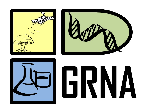Banca de QUALIFICAÇÃO: HAROLDO ARAÚJO DA SILVA
Uma banca de QUALIFICAÇÃO de MESTRADO foi cadastrada pelo programa.DISCENTE : HAROLDO ARAÚJO DA SILVA
DATA : 10/12/2019
HORA: 15:00
LOCAL: Sala 103 - Campus Amazônia
TÍTULO:
PHYTOCHEMICAL AND BIOLOGICAL STUDY OF THE AGUINDUSTRIAL WASTES OF CUPUAÇU (Theobroma grandiflorum) AND AMAZON COCOA (T. cacao) FOR FOOD USE
PALAVRAS-CHAVES:
Bioprospecting; natural product chemistry; food Technology; antioxidant.
PÁGINAS: 32
GRANDE ÁREA: Outra
ÁREA: Ciências Ambientais
RESUMO:
The Amazonian biome has unique diversity, several plants in this region have been investigated for their therapeutic, nutritional activities and the production of bioactive compounds. However, studies focusing on the residues generated from the commercial exploitation of natural resources are still scarce. Cupuaçu (Theobroma grandiflorum) and cocoa (Theobroma cacao) are native plants of the Amazon region, used by the food and cosmetic industries due to their nutritional potential. and exotic flavor. Cupuassu production in Brazil is concentrated in the Amazon region, with Pará being the main producing state, with an average production of 29,558 tons, followed by Amazonas, Rondônia and Acre. Cocoa is another protagonist in the economic scenario of the northern region, in the first half of 2019 production was 119,858 tons, with Pará the state with the highest yield of this crop with a production of 111,802 tons, followed by the Northeast and Southeast. As a result of the commercial extraction of these species, the volume of organic waste from the industrial processing of these fruits grows, in the state of Pará the industrial waste of cupuaçu and cocoa are approximately 54,780 tons and 14,480 tons, respectively. This picture is becoming an environmental problem in the region that cannot find a suitable destination for this byproduct. Thus, this study aims to add value to the agroindustrial residues of T. grandiflorum and T. cacao from the phytochemical study and biological activities for the generation of food ration. Ethanolic and hydroalcoholic extracts were prepared from the cake of peel residues and fruit seeds, using Ethanol 96 GL and Ethanol: Water 1: 1 (v / v) to obtain the extracts, respectively. The chemical characterization will be obtained by quantification of the total phenolic compounds, total flavonoids, condensed tannins and identified by High Performance Liquid Chromatography coupled to a photo diode array detector (HPLC-PDA), High Performance Liquid Chromatography coupled to a Spectrometer. (HPLC-MS / MS), direct infusion with Electrospray Ionization Source Mass Spectrometer (MS-ESI) and annotation of chemical compounds by Molecular Networking. In biological assays the antioxidant activity will be evaluated by the DPPH, ABTS and FRAP methods, and the antimicrobial activity will be determined by the well diffusion method to determine the Minimum Inhibitory Concentration (MIC).
MEMBROS DA BANCA:
Externa ao Programa - 1776289 - ELAINE CRISTINA PACHECO DE OLIVEIRA
Presidente - 152.758.687-15 - LAURO EUCLIDES SOARES BARATA - UFOPA
Interno - 1739961 - MANOEL ROBERVAL PIMENTEL SANTOS




